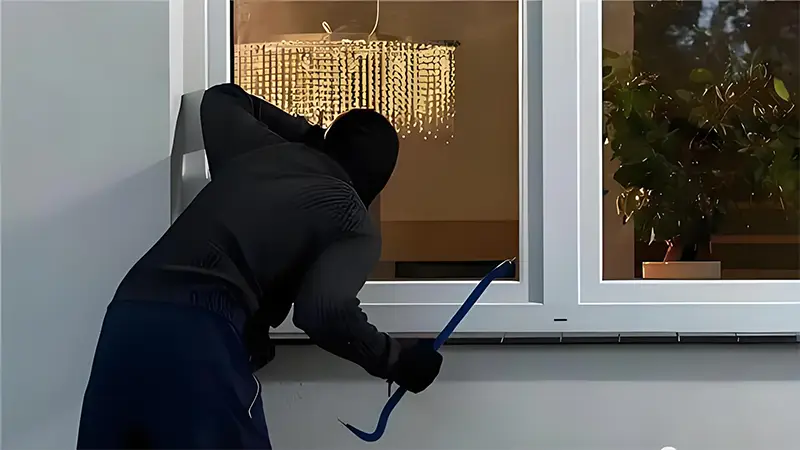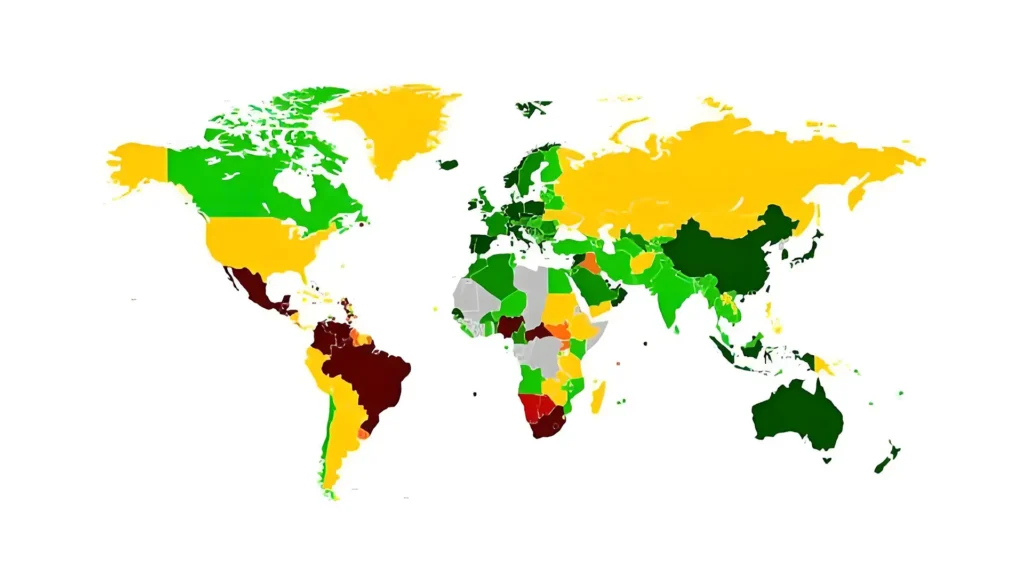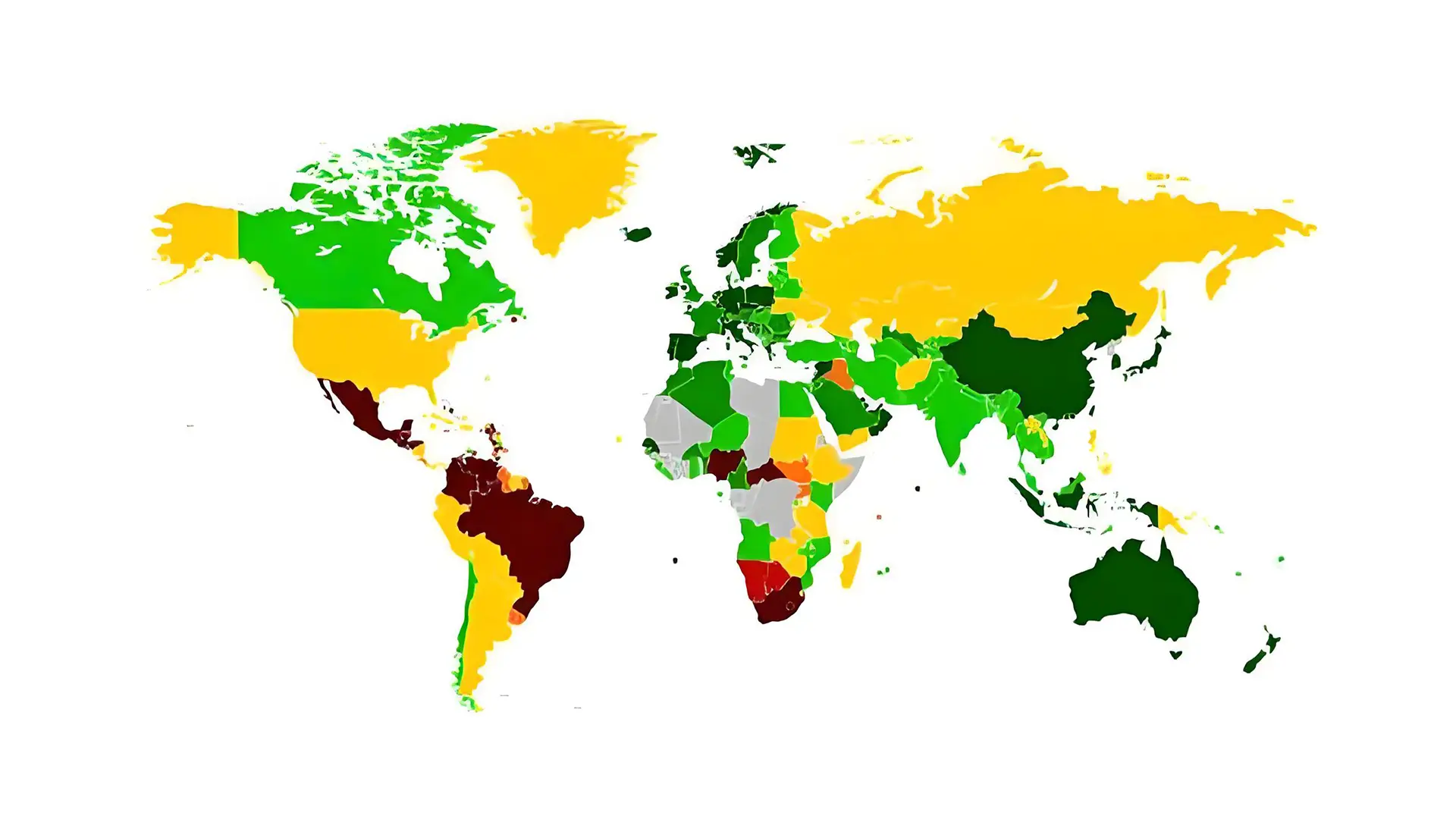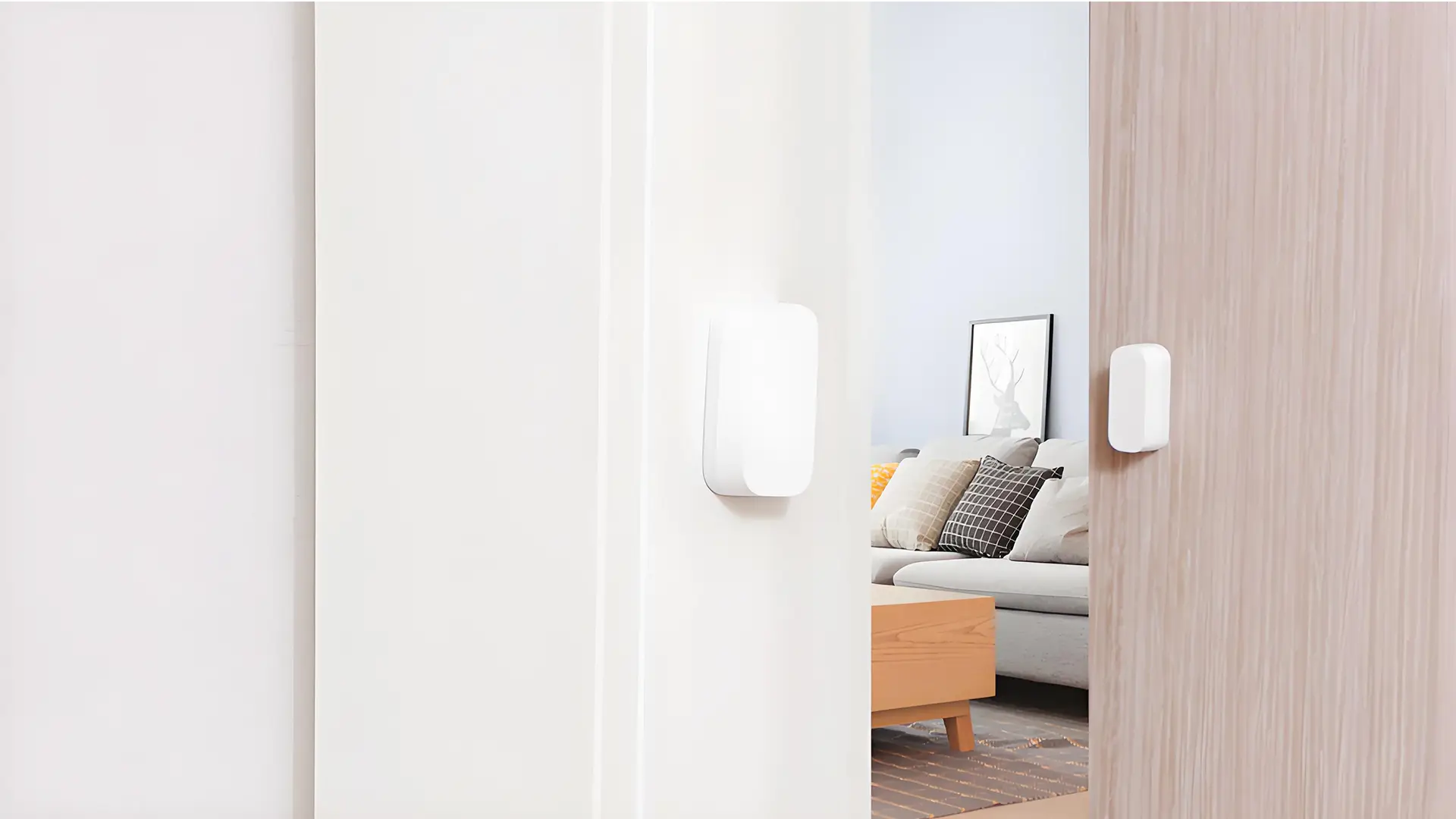In 2024, housing safety remains the main concern for homeowners and tenants. With the advancement of technology, various home security devices are being introduced one after another, while new theft techniques are constantly emerging. Understanding the trend of burglary has become very important. Home is supposed to be the safest place for people to feel, but various data shows that the number of burglary cases worldwide is constantly increasing, and home safety issues are troubling people.
This blog delves into the latest statistics, patterns, causes, and solutions of home invasions in 2024. By gaining a deeper understanding of burglary, we can take targeted measures that can greatly reduce the risk of our rooms being stolen. Let’s take a closer look at this article, protect our own homes, and live a peaceful 2024.
Understanding Home Burglary in 2024
Home invasion is usually defined as the illegal entry into a residence with the intention of committing theft, and it remains one of the most common property crimes worldwide. Although there have been fluctuations in the number of burglaries in the past decade, the global economy has declined since the outbreak of the pandemic, and the number of burglaries is gradually increasing. In 2024, the form of burglary has changed, and the way and timing of the crime have also changed. The strategy of burglary is constantly advancing with the development of technology nowadays.
The Changing Nature of Burglary
In 2024, the nature of burglary has changed, and theft is no longer relying on brute force to enter a house. On the contrary, with the rise of intelligent protection technology, burglary has prompted criminals to adopt more effective strategies. For example:
- High tech intruders:Thieves’ theft techniques are constantly evolving, as they use digital tools to bypass old, unencrypted smart locks or alarm systems, leading to particularly serious cases of theft in many old houses.
- Proficient reconnaissance skills:Nowadays, thieves not only frequently visit various communities for reconnaissance, but also monitor residents’ activities through social media posts. Thieves collect residents’ holidays, activities, and daily work time, which allows them to infer the control time of the house.
In addition, many households are integrating low-quality smart home devices, which have network vulnerabilities that may be exploited by criminals, making them more susceptible to burglary.
Burglary Trends: Suburban vs. Urban Areas
In 2024, there will also be significant changes in the areas where burglaries occur. Traditional burglary occurs in urban centers with high population density and concentrated wealth. However, the latest data shows that burglaries in suburban areas are on the rise. Compared to the city center, suburban burglaries have the following advantages:
- The low population density, fewer people on the road, and fewer witnesses in the suburbs make it easier for thieves to drive and steal without being noticed.
- There are many cameras and community police in urban areas, making it easy to catch burglars.
The occurrence of this situation indicates that suburban housing is paying more attention to housing safety than ever before, and the government also needs to increase suburban community cameras appropriately.
New methods and strategies for entering the room
In 2024, the methods of entry used by thieves will also become increasingly different. Although traditional forced entry still accounts for a large proportion, more efficient methods are also becoming more and more common, including:
- Thieves will increasingly observe the situation of each household in detail. If the homeowner’s door is not locked, the window is not closed, or the garage is not locked, the thief will immediately detect and carry out the theft.
- With the rise of e-commerce, more and more people are gradually getting used to delivering goods. Thieves will take advantage of this by disguising themselves as delivery personnel to observe houses or break into homes for theft.
- The security of garages or warehouses in many houses is relatively poor, making them high-risk areas for old theft.
Latest burglary statistics for 2024
Globally, the number of home invasions in 2024 has increased by 7% compared to 2023, and the trend of home invasions is worrying. By 2024, one in every 80 households worldwide will experience home invasion. Globally, the more stable the region, the fewer people will commit home invasion, while the more turbulent the region, the more people will commit home invasion.
Global Burglary Trends in 2024
In 2024, the number of burglaries in the United States increased by 5%, with approximately 2.5 million recorded cases, with California, Texas, and Florida remaining hotspots for burglaries. In the European region, including the UK and Germany, the burglary rate is more stable or slightly decreasing. The Asia Pacific region, mainly Australia and New Zealand, saw a 10% increase in burglary fees.
Subdivision by type of burglary
Currently, 60% of burglary incidents occur during the daytime, with the most common time occurring between 10am and 3pm, which is when most people go to work or school. Thieves often go to the community to scout, which allows them to know the working hours of everyone in the community. Nowadays, nighttime burglaries have become less frequent, but the losses caused by nighttime burglaries are higher.
52% of burglaries are forced entry, which includes pairing windows with homes, prying locks, or directly prying doors. The remaining 48% of burglaries were achieved through other means.
75% of burglaries occur in single family homes, typically located in suburban areas, while 20% of burglaries occur in apartments and multi unit residences. Compared to previous years, there has been a 15% increase in burglary incidents in vacation homes and short-term apartment rentals, indicating that long-term vacant properties require more security measures.
The Entry Points for Burglars
About 34% of burglars enter through the front door, which is usually caused by loose locks or forgotten locks. About 29% of thieves climbed in through windows. And garage burglaries account for 12%. The burglary in the back and basement accounts for 15%. Understanding the main entry points of thieves and making targeted defenses can greatly reduce home burglary.
Visualizing the Trends
Here’s a quick snapshot of the most critical burglary trends in 2024:
| Category | Statistic |
| Global burglary increase | 7% rise compared to 2023 |
| Daytime burglaries | 60% of total incidents |
| Forced entry rate | 52% of reported burglaries |
| Top entry point | Front door (34% of cases) |
| Suburban vs. Urban | 12% increase in suburban areas |
| Repeat victimization | 300% more likely without security |
In summary, the statistics of home invasions in 2024 remain high, with daytime burglary cases on the rise. Suburban homes are becoming increasingly targeted by thieves, and weak entrances such as front doors, windows, and garages are still major loopholes, posing new challenges to public security in many areas. Although advanced home security systems can effectively prevent burglary, their installation is relatively rare, and homeowners should take proactive measures to protect their property.
Key Factors Driving Burglary Rates
The factors leading to the burglary rate in 2024 are multifaceted, including economic conditions, technological changes, social security, and housing protection. Given the constantly changing trend of burglary, we understand the main factors that affect theft and can avoid areas that are susceptible to attacks when purchasing property.
Economic Instability and Unemployment
Economic conditions are one of the main driving factors for the rate of burglary. In 2024, the global economy is in a downturn, with inflation intensifying and unemployment rates rising in various countries, leading to many people facing difficult living conditions. Many people, due to economic pressure, experience an increase in property crimes, and compared to other crimes, the risk of burglary is lower. These people will start to engage in burglary. In regions experiencing economic recession, the rate of burglary is often higher.
In times of economic hardship, thieves prefer to steal electronic products, jewelry, and cash, which are easy to transport and sell on the black market. Hiding valuable items at home can reduce one’s property losses.
Poor Home Security and Complacency
Statistics continue to show that households without security cameras, alarms, or smart locks are 300% more likely to be stolen. In 2024, many homeowners still underestimate the risk of burglary, especially in suburban and rural areas that are considered ‘safe’.
Sometimes, the homeowner forgets to lock the windows and doors, which can be exploited by thieves. Many thieves use open garages, back doors, and unlocked windows to sneak in and steal. Independent garages, garden sheds, and ancillary buildings with poor security are also key areas of concern for thieves, who may steal expensive items such as homeowners’ bicycles and outdoor equipment in these areas.
The lack of intelligent security systems will also drive up the burglary rate in these areas. There are basically no smart devices installed in suburban and rural areas, which gives opportunities for thieves.
Evolving Criminal Tactics and Technology
In the past few years, the theft techniques of thieves have also been improving. In 2024, some thieves are proficient in electronic technology and will use some tools to bypass traditional security measures, which will render the security system of the house ineffective.
Many homeowners like to share photos of their travels and vacations through Instagram or Facebook, which can be targeted by thieves who will break into their homes during their travels.
With the growth of online shopping, many homeowners often receive home delivery services, and thieves will impersonate delivery personnel to peek into the community or commit home invasions.
Societal and Law Enforcement Challenges
In recent years, various crimes around the world have been on the rise, and public security in various regions has deteriorated. There is a shortage of police officers in different areas, and many regions are also cutting police budgets, which has led to a shortage of police personnel and increased work pressure, resulting in delayed response times. Many thieves know that the police are understaffed and the pressure of being caught is low.
In addition, some homeowners who suffer from minor home invasions have long insurance claims processing times and complex processes, and they may not report them to the police. This type of underreporting may lead to more burglars entering and committing burglary.
Impact of Home Security Systems on Burglary Rates
In 2024, the latest home security system is highly effective in preventing burglary. With the increasing functionality and cost-effectiveness of many smart products, more and more households are starting to install these smart devices.
Deterrent Effects Caused by Security Systems
A large proportion of burglaries are opportunistic, with intruders selecting homes that appear poorly secured or easily accessible. Statistics for 2024 indicate that houses without security systems are three hundred percent more likely to be burglarized than those with visible safety features such as cameras, alarms, or smart locks. The mere presence of cameras, signage, or an alarm box itself acts as a psychological deterrent, as it gives potential intruders notice that the risk of capture is simply too great.
Surveys of convicted burglars further reinforce this trend. Most burglars confess that they deliberately steer clear of homes with identifiable security structures, especially those with surveillance cameras, due to the fact that it raises the possibility of identification and catching. Burglars have a greater tendency to attack such residences in which they will act fast and discreetly without knowing the house has some decent security features.

The Role of Modern Smart Home Technology
Smart home technology in 2024 will redefine home security, with traditional alarm systems being replaced by advanced IoT solutions for protection and tracking. The main innovations include:
- Intelligent security camera: Today’s cameras have higher clarity, equipped with motion detection sensors, and can distinguish between humans and animals. This reduces false positives. In addition, features such as two-way audio allow homeowners to directly communicate with traffic or potential intruders.
- Video doorbell: Smart video doorbells are an important component of home security. It allows homeowners to see everyone in front of their door clearly and even communicate with them, which reduces potential burglaries.
- Smart locks and biometric systems: Many smart door locks now provide keyless access, which can be opened through fingerprints and passwords, or remotely through mobile phones. The security of smart door locks is very high, and it is very difficult to open, eliminating the weakness of traditional key lock picking or copying.
- Smart door sensors: Smart door sensors can monitor the opening and closing of doors and windows in the home. When there is illegal intrusion in the home, we can receive information in a timely manner through our mobile phones, which enables us to quickly deal with illegal intrusion and reduce our losses.
Statistical Impact of Home Security Systems
Home protection system adoption has reduced housebreaking costs in maximum places where it’s been employed. Statistics indicate that communities that have a massive number of houses with safety systems are regularly targeted less regularly for housebreaking crimes. For instance,
- Visible safety structures lessen burglary fees in included houses by way of up to 60%.
- Security cameras can lower the fees of incidents on account of compelled entries as excessive as 50%, as burglars could prefer an clean target.
- Alarm structures, in particular those that bring about audible sirens, will in addition deter burglars as eighty five% of intruders flee the scene immediately after hearing an alarm.
Communities that include security technology together benefit from this trend. The more homes equipped with safety measures, the lower the overall crime rate, since burglars are deterred from attacking entire neighborhoods in which they have a greater risk of being caught.
Affordability and Accessibility in 2024
A few years ago, the price of security systems was relatively high, beyond the affordability of ordinary households. But by 2024, with the promotion and popularization of technology, prices will become increasingly affordable. There are many smart home devices that can be used as home protection, some of which are expensive, such as smart locks, while others are low-priced, such as smart door sensors. Homeowners can choose the smart security devices they need based on their own needs and budget.
Collaborative cooperation among different devices
Although many security devices have powerful functions, it is difficult for a single device to fully protect the safety of the entire house. To protect the safety of the entire house, various smart home security devices need to cooperate with each other. For example:
- Smart door sensors can be combined with alarms: when there is illegal intrusion in the house, the alarm will automatically sound, which may deter thieves.
- Install motion sensing lighting:When someone infiltrates the house at night, the lighting equipment will illuminate the infiltrator.
- Smart door locks and camera devices:When someone tries to pry open the door lock, the smart camera opens, allowing us to communicate directly with the thief and reduce potential intrusion.
Families can purchase multiple smart security devices and use hubs to coordinate them with each other, which can greatly reduce the possibility of burglary.
Practical Tips for Home Security in 2024
With the frequent occurrence of burglary cases, protecting the property safety of families has become even more important. With the continuous development of new technologies, protecting indoor property has become easier. Here are some tips for indoor protection in 2024.
Invest in a Smart Home Security System
The current intelligent security system technology is very advanced, which can greatly reduce burglary. The combination of intelligent devices such as artificial intelligence cameras, smart door locks, and smart door sensors can greatly improve the efficiency of theft detection.
Secure Doors, Windows, and Garages
The doors, windows, and garage of the house are the main places where thieves enter, and strengthening the protection of these areas can greatly reduce theft of the house.
Avoid Oversharing on Social Media
Do not excessively share on social media
Don’t share your travel plans, work hours, and vacation plans on social media. Thieves will follow our social media accounts and steal when our house is unoccupied.
Make Your Home Look Occupied
When your house is empty, you can also turn on or off the lights in your room remotely, or turn on the radio and TV remotely to make your home feel like someone is there, which will reduce home invasions.
Collaborate with Neighbors and Community
Collaborating with neighbors is a great way to prevent theft. Mutual care between neighbors can prevent potential crime.
Regularly Maintain Your Security Measures
Regular maintenance of the home defense system is crucial as it can extend the lifespan of the protective system and ensure its proper functioning.







